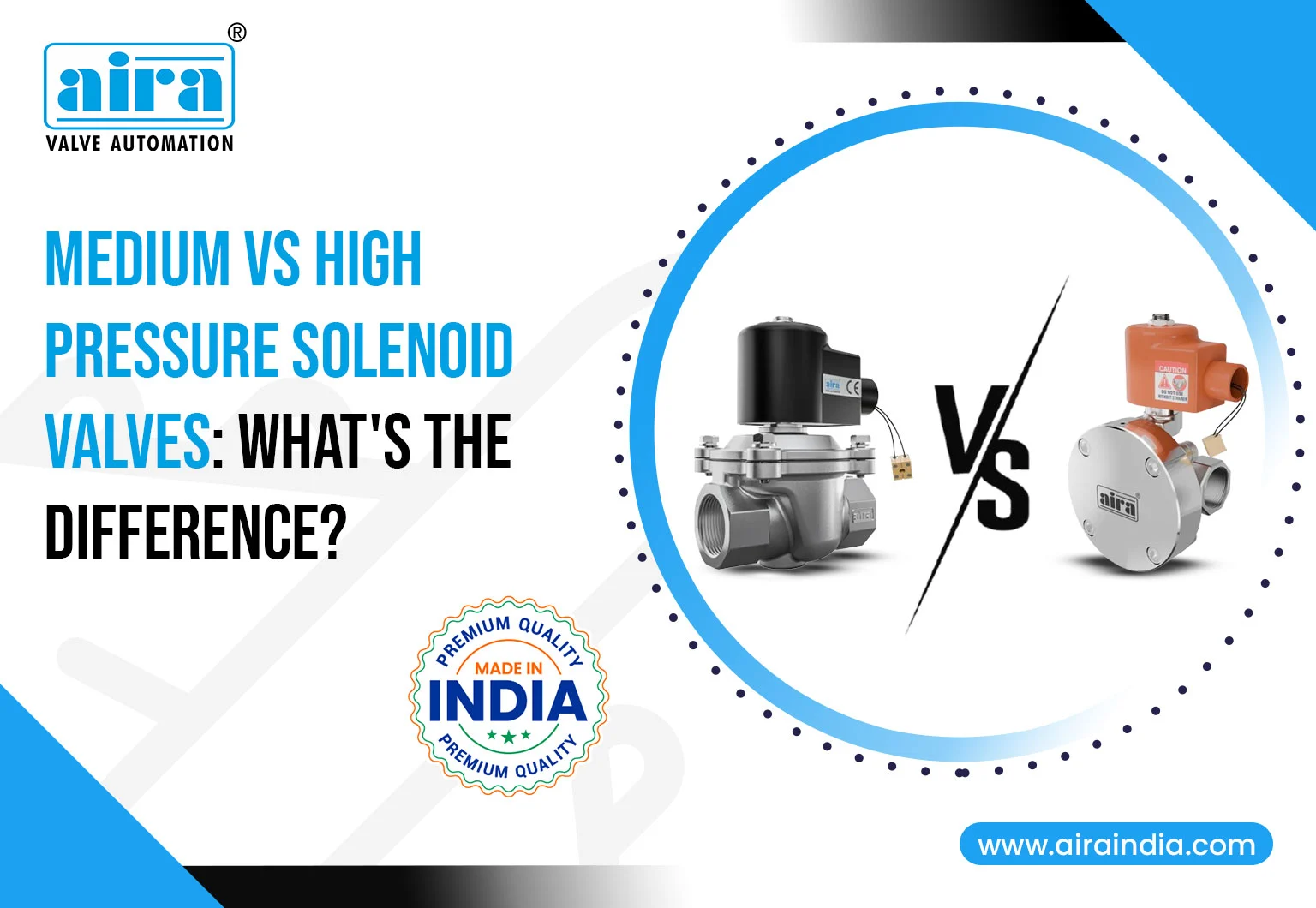Solenoid valves are key components in industrial automation, controlling the flow of liquids and gases with precision. But one factor that’s often underestimated is pressure rating. Choosing the wrong valve for your system’s pressure can lead to serious issues like leaks, failures, or safety hazards. In this blog, we’ll break down the differences between medium-pressure solenoid valves and high pressure solenoid valves, covering pressure ranges, construction, use cases, and safety considerations.
What is Considered Medium Pressure vs High Pressure?
In industrial terms, pressure classification is not always universal, but generally:
- Medium pressure: 5 to 40 bar
- High pressure: 40 to 400 bar or even higher in specialized applications
These ranges can vary depending on the application, region, or industry standards. That’s why it’s essential to understand your system’s exact pressure requirement before selecting a solenoid valve. A mismatch between valve rating and system pressure can compromise both performance and safety.
Design Differences Between Medium and High Pressure Valves
The main design difference lies in how each valve handles stress. High-pressure solenoid valves are engineered to endure extreme forces without failure.
- Body construction: High-pressure valves are made from reinforced materials with thicker walls and often stainless steel or alloy bodies to withstand higher burst pressure.
- Seal types: Medium-pressure valves may use NBR or EPDM seals. High-pressure valves require more robust materials like PTFE, FKM, or graphite, which can resist deformation.
- Coil strength and armature: High-pressure models are equipped with more powerful coils and redesigned armatures to manage actuation at higher forces.
- End connections: While medium-pressure valves may come with threaded ends, high-pressure valves typically feature flanged or bolted connections for added stability and sealing strength.
Choosing based on both working pressure and burst pressure is vital to long-term reliability.
Media Compatibility & Application Areas
Each pressure class has its preferred media and use cases.
Medium Pressure Solenoid Valve Applications
- Media: Air, water, inert gases, low-viscosity liquids
- Used in: Water treatment systems, compressed air lines, beverage and food-grade systems, HVAC setups
High Pressure Solenoid Valve Applications
- Media: Hydraulic oil, superheated steam, high-pressure gas, aggressive or corrosive chemicals
- Used in: Oil & gas industries, heavy-duty hydraulics, chemical injection systems, power generation, and high-pressure cleaning units
At Aira Euro Automation, our solenoid valves are designed with specific media compatibility in mind, ensuring optimal flow control for your industrial needs.
Safety, Maintenance & Operational Concerns
When operating under higher pressures, safety becomes a much more critical issue.
- High-pressure valves require
- Stronger coils to handle the actuation force
- Thermal management due to potential heat buildup
- Flameproof or explosion-proof enclosures where required
- Certifications like CE, ATEX, or ISO for hazardous environments
- Medium pressure valves
- Easier to maintain and generally more cost-effective
- Fewer safety risks, but still require surge protection and regular checks
Also, read Aira’s 4-Year Warranty Pilot Operated Diaphragm Solenoid Valve
Using a valve outside its rated pressure limit can lead to dangerous leaks or even catastrophic failure, so never compromise on the pressure rating.
How to Choose the Right Solenoid Valve Based on Pressure
Here’s a quick checklist to help you decide:
- Know your system pressure – operating and surge pressure
- Understand the media type – chemical compatibility matters
- Choose the right materials for both body and seal
- Match the coil specs – voltage, insulation class, duty cycle
- Check datasheets, especially for burst pressure and certifications
- Consult with experts – especially when your system handles high-risk media or operates under extreme pressure
At Aira Euro Automation, we offer expert support to help you make the right valve selection every time.
Don’t Let Pressure Catch You Off Guard
Selecting between medium and high-pressure solenoid valves isn’t just a technical detail; it’s a crucial step for ensuring system safety, longevity, and performance. The pressure rating influences everything from construction to maintenance.
Need help selecting a solenoid valve that fits your pressure range?
Get in touch with our technical team at Aira Euro Automation today and ensure you’re making the right choice for your system.
